Hybrid lilies: an overview of varieties, planting and care rules

The species and varietal diversity of lilies is simply amazing. The choice for a garden plot can be extremely difficult. However, lilies are well worth finding the right varieties. This royal flower is able to transform any, even the most standard landscape, giving it spectacularity, sophistication and luxury. Among the varieties of lilies, there are many whimsical.
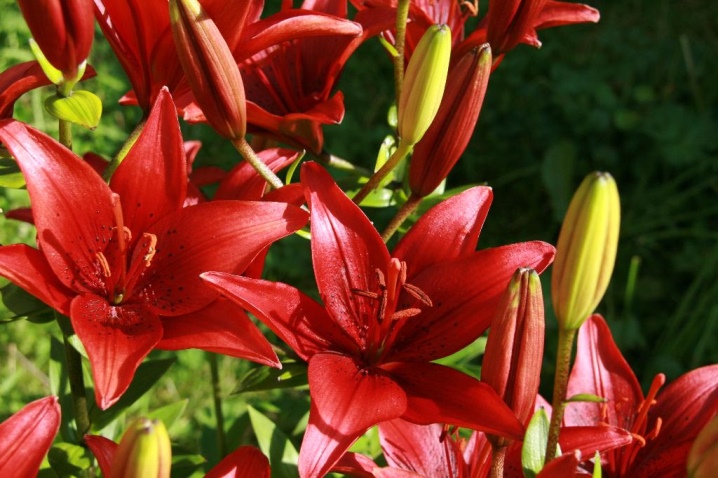
What it is?
Asia is considered the birthplace of this bulbous perennial of the lily family, but this fact still does not have an exact confirmation. The lily genus includes a huge number of species and subspecies - more than a hundred. The height of erect stems can range from 4 cm to 2 m. Depending on the variety, colors, shades and forms of flowering may be different:
- by the type of a bell;
- bowls;
- funnels;
- stars;
- turbans.
Hybrid species have a particularly high decorative effect, and many of them tolerate cold well and are immune to disease.
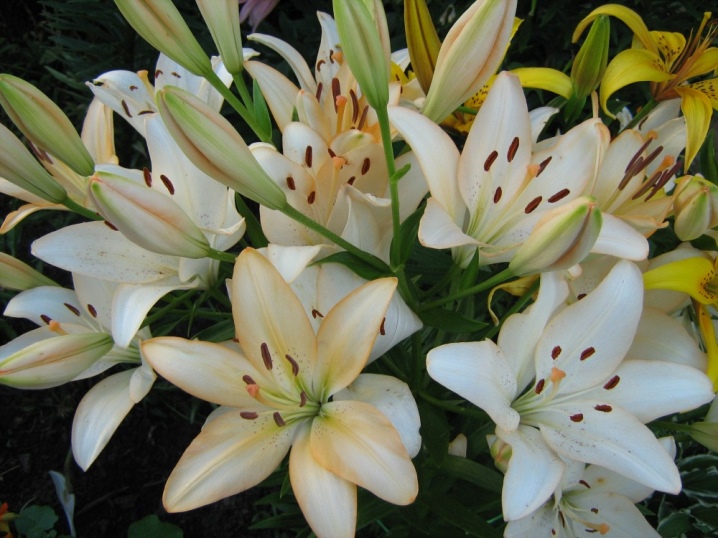
Lilies look great both in a single planting option and in various combinations. There are very few flowers that can compete with the royal flower in grace, elegance and beauty. Hybrids have been bred by breeders since the 19th century, trying to increase the endurance and external qualities of the flower. This goal has been achieved, but breeders do not stop there. Every year more and more new varieties of this or that hybrid species appear.
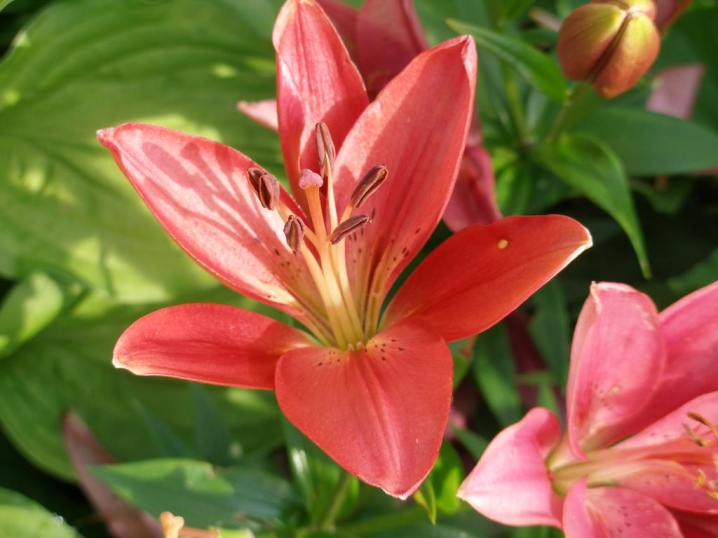
Hybrid groups
Groups of hybrids are presented in a wide variety.
- Asian group... These lilies are the most capricious in terms of soil selection, it is in the Asian group that the largest number of varieties. They feel good in almost any conditions, they take root equally well on acidic, neutral, fertile soil types. The variety of colors, shades, colors is very wide as well as the structure of inflorescences. As for the height, the possible interval is 50-150 cm.
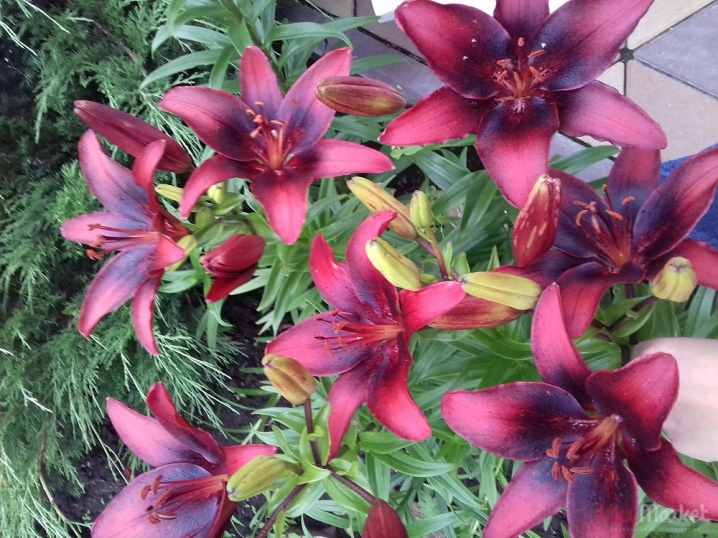
- Martagon group... They are also called curly. They tolerate frost perfectly, have excellent immunity, bloom profusely and beautifully - up to 25 flowers per stem. The acidic soil is not suitable for them, so they are not mulched. Grow equally well in partial shade and in the sun. The color is varied, spotted. Height varies from 120 to 180 cm.
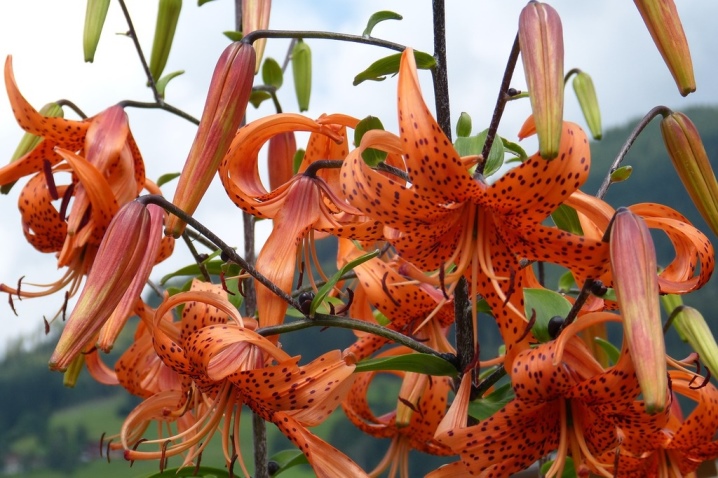
- Eastern group. A very high degree of decorativeness, large, spectacular flowering, with an incomparable aroma. This group belongs to the aristocratic, elite. Care requirements are not too simple, and if ignored, hybrids are prone to disease. These varieties are not recommended for those taking their first steps in gardening. They grow better on fertile, acidic soil with drainage. They are planted in the sun in a calm place, they are sheltered for the winter. Height from half a meter to 250 cm.

- A group of tubular (Orleans) hybrids. The shape of the inflorescences resembles a funnel (tube), hence the name. Although there are several varieties in this group with different flower shapes. This group is based on the Asian one. The colors are different, the flowering is long, the aroma is very pronounced. They are planted on fertile soil of a neutral type. Includes frost-resistant and cold-resistant varieties.
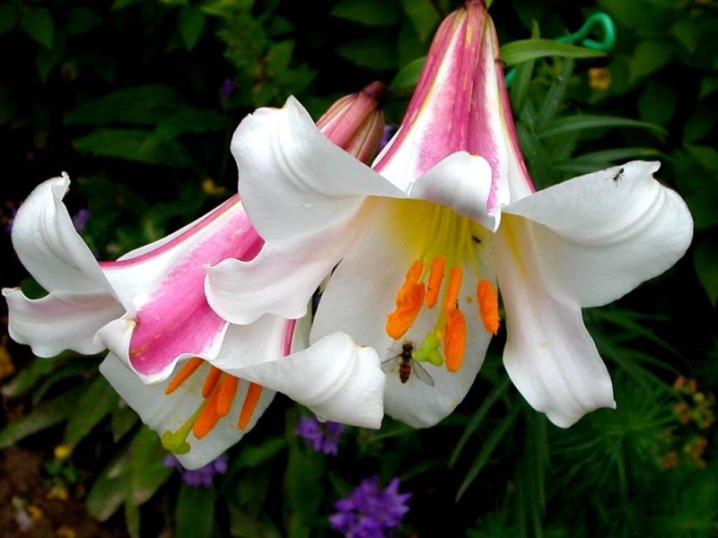
- American group. Breeders obtained this species by crossing the Colombian, leopard and Canadian varieties. American lilies grow on non-acidic soil, do not take root well after transplantation. The flowering is intense, catchy, exotic. Height varies from 120 to 210 cm.
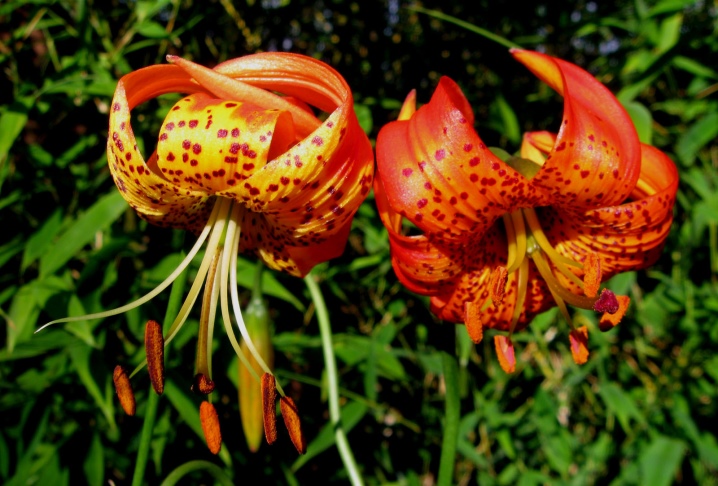
- Candidum group. By combining the Chalcedony and snow-white species, these lilies were obtained. There are few varieties, but all are very beautiful, elegant. Colors are yellow, white, different shades. Tube or funnel shape. They often get sick, especially with fungal infections. Grow well in the south. Height varies from 120 to 180 cm.
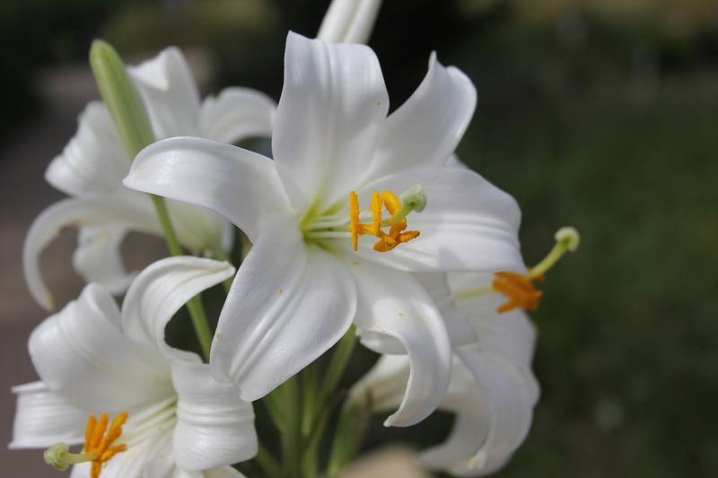
- Long-flowered group... Differs in large flowering, bell-shaped, bent ends. Flower length up to 20 cm. Very whimsical in cultivation, grow better indoors for cutting. Height from 80 cm to one meter.

- A group of snow-white ones. The flower is in the form of a tube, the ends are curved, like soils of alkaline type. There are few varieties, the flowering is snow-white, the aroma is very strong. Whimsical to growing conditions.
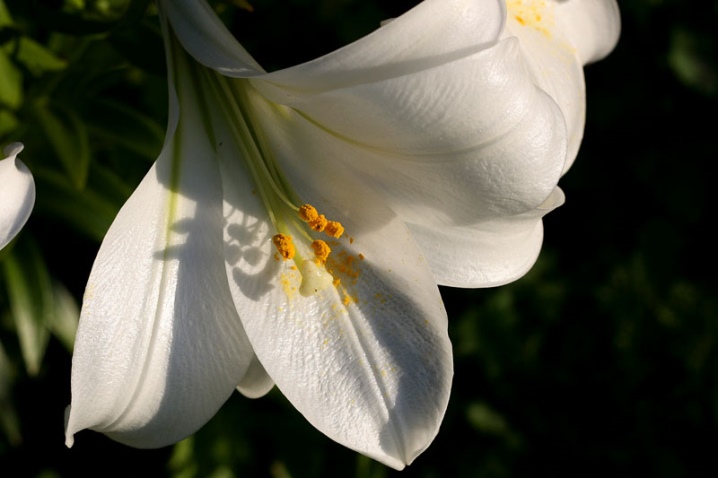
- Tetraploid hybrids. These plants are unpretentious, but in the middle lane they require attention. There are a lot of varieties, strong aroma, varied colors.
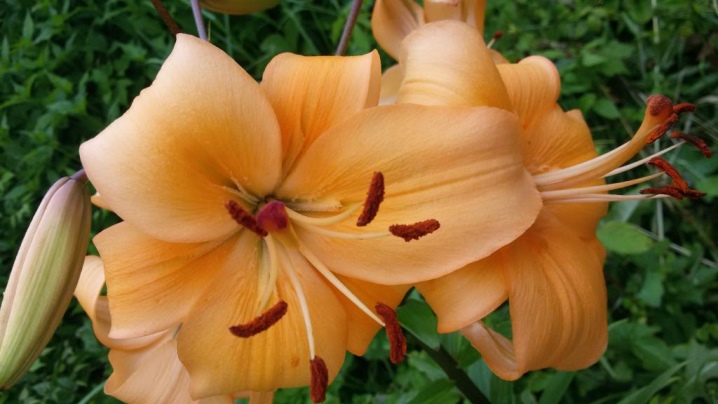
- Canadian hybrids. Very beautiful, showy, but extremely whimsical. Flowering in the form of a yellow bell, few varieties. Photophilous group.
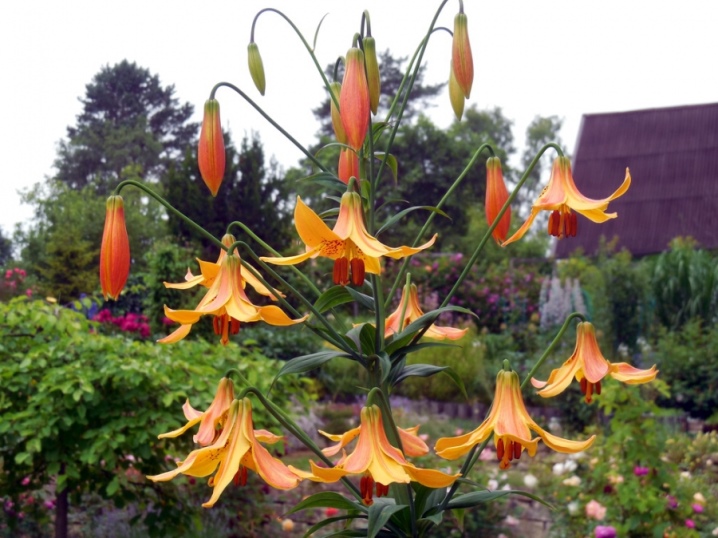
Modern varieties and their varieties
Breeders crossed groups of hybrids, gradually improving their characteristics. Hybridization has led to the emergence of a variety of varieties, combined into subspecies. The name of these subspecies consists, among other things, of an alphabetic index-key, it is on them that gardeners are guided when acquiring one or another variety.
Consider the description of the subspecies.
LO hybrids
They were bred not so long ago, crossing oriental and long-flowered species. High degree of decorativeness, large flowering. They tolerate frost perfectly, are immune to diseases. Height from one meter to one and a half. The most famous varieties:
- "Triumphant" - large bloom with a snow-white border and a juicy pink heart;

- Prince promise - a pale pinkish tone gradually turning into the color of a faded rose;
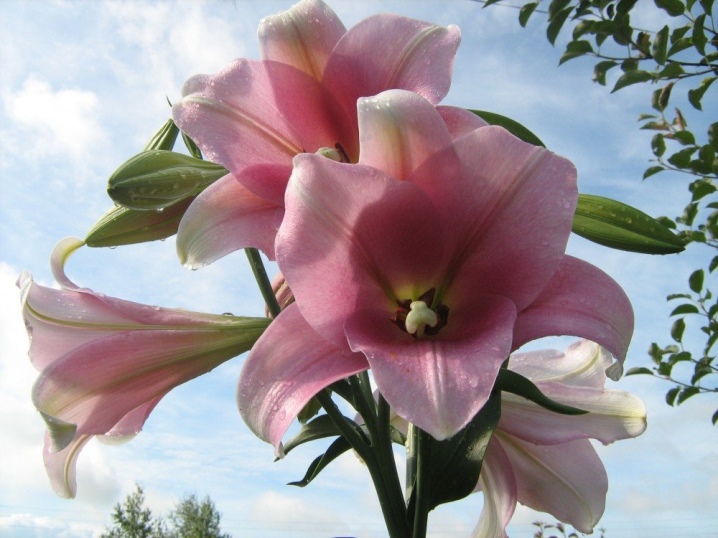
- Queens promise - may be lighter and darker, but the general color is pink, they are found with a yellowish tint;
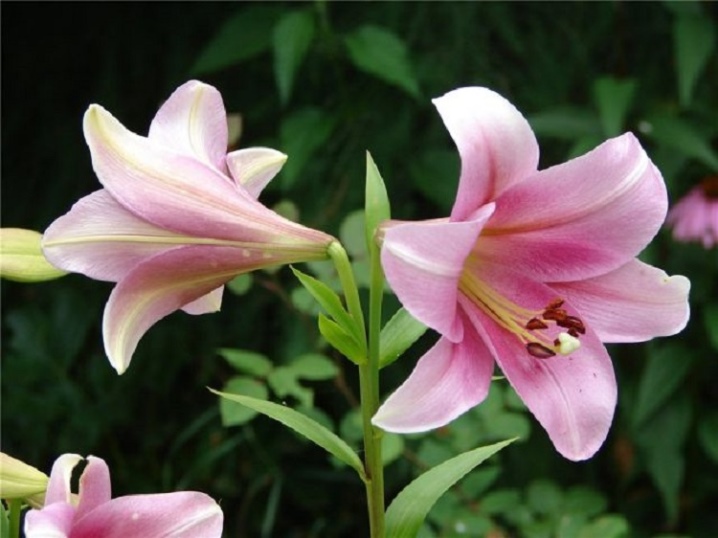
- Sea treasure - very bright red flowers, showy, with dark specks in the center.
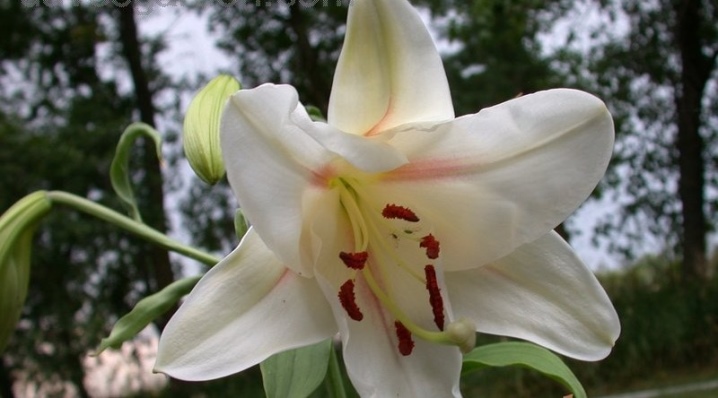
LOO hybrids
Derived from three different flavors, considered a more advanced version of LO. The bloom is very large, the aroma is pronounced. The most popular varieties:
- Dreamweaver - very beautiful white-pink tubular inflorescences;
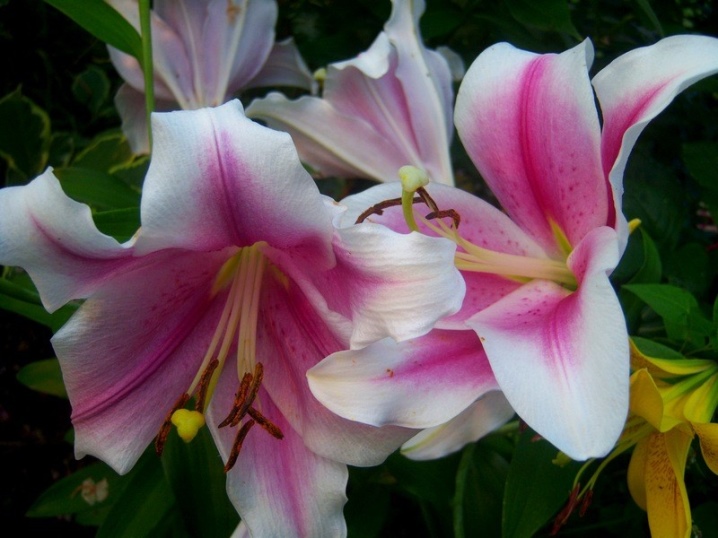
- Nuance - large, luxurious inflorescences with light waviness, snow-white, with a light rose tone;
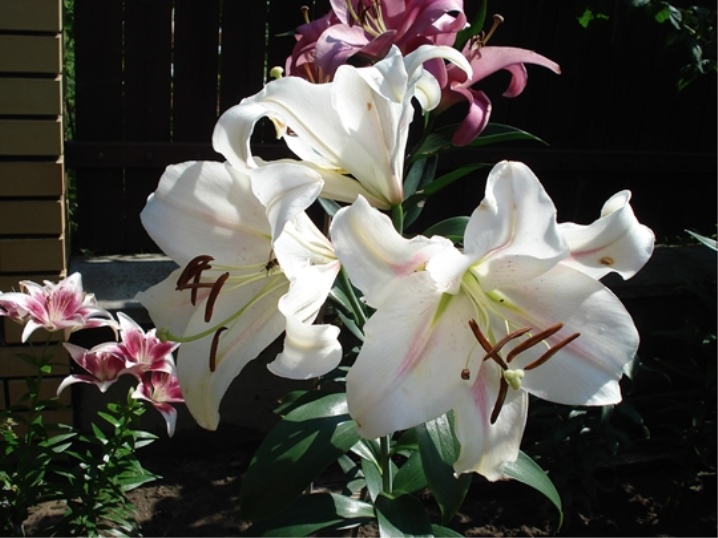
- Pink Brilliant - magnificent bloom from bright to pale pink with mottling;

- Polar - a snow-white large flower with a slight addition of pale greenery in the center.
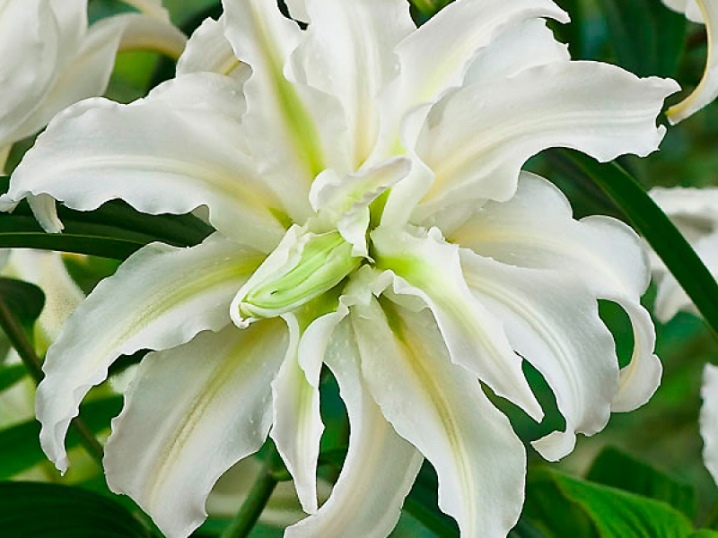
LA hybrid
Refined, graceful flowers, the result of crossing Asians with long-flowered ones. Immunity is excellent, they tolerate winter well under cover. Shades are varied - from snow-white to dark reds.
Flowering is large, dense type, sturdy stems, pleasant smell, not sharp. They bloom early.
Popular varieties:
- "Pride Star" - apricot flowering;

- "Nomad" - large flowers of a juicy lilac tone;

- "Manhattan" - a raspberry shade with a pink tint;
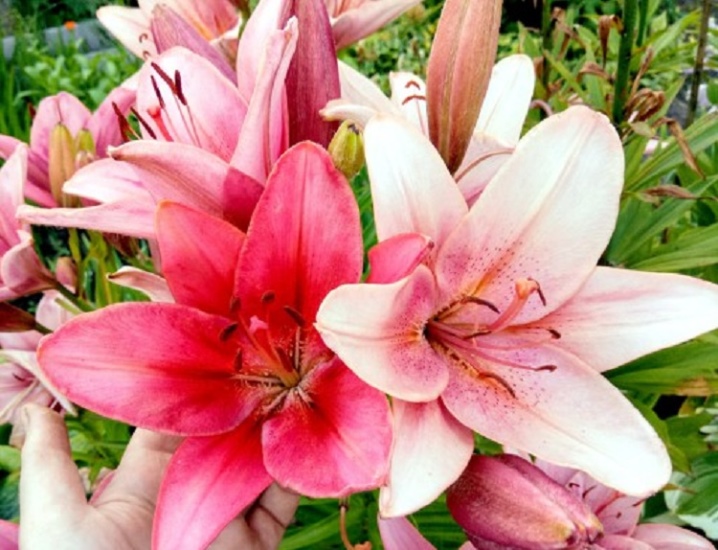
- "La Paz" - white-pink flowering;
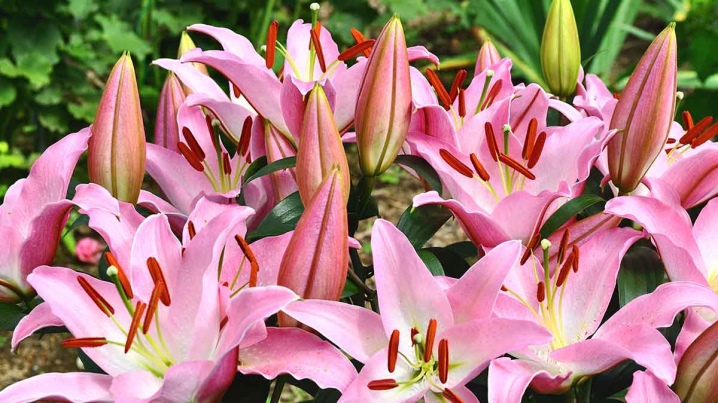
- Golden State - rich yellow;
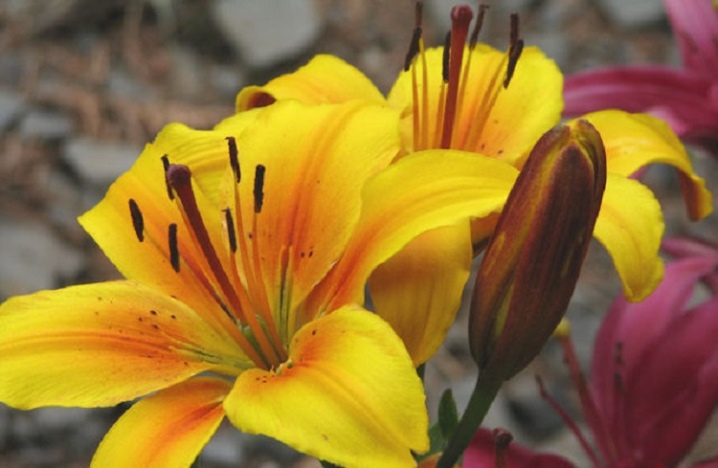
- Ercolano - pale lemon shade;
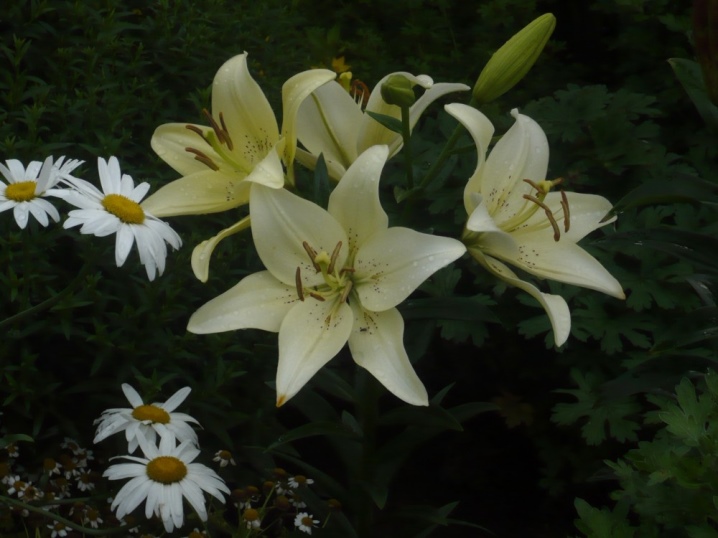
- California - ripe cherry color;
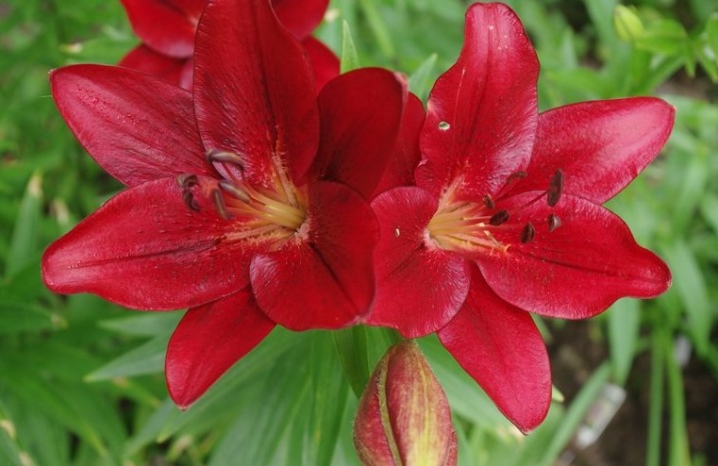
- Indian Diamond - luxurious orange blossom.

OT hybrid
One of the new subspecies, which immediately became popular. Bred by combining tubular and oriental species.
Very tall specimens, large flowers. The aroma is intense, the flowering is bright, aristocratic. They tolerate winter well, immunity is excellent.
Popular varieties:
- Anastasia - pinkish petals with green veins;
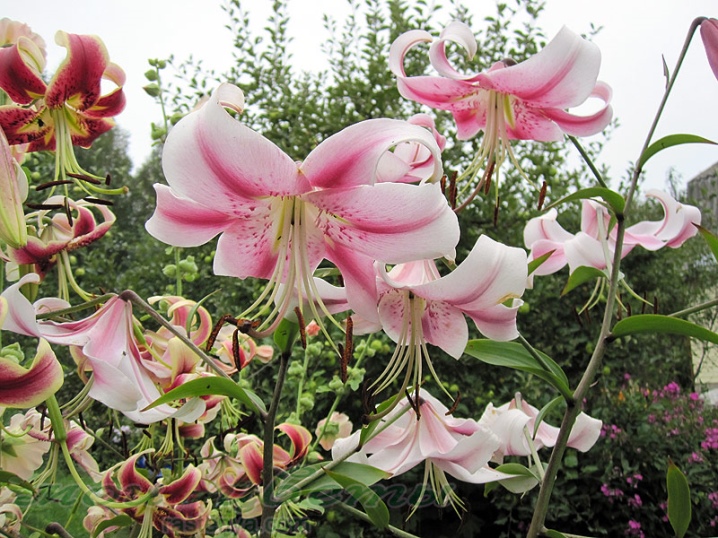
- Donato - gorgeous purple flowers;
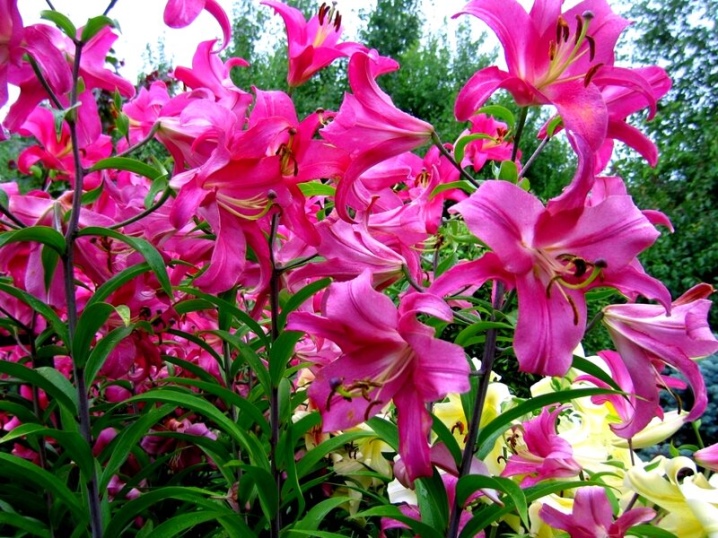
- Honeymoon - faded yellow bloom;

- Purple prince - very beautiful burgundy color with a touch of violet;

- Robina - the petals are purple, the neck is white-yellow.
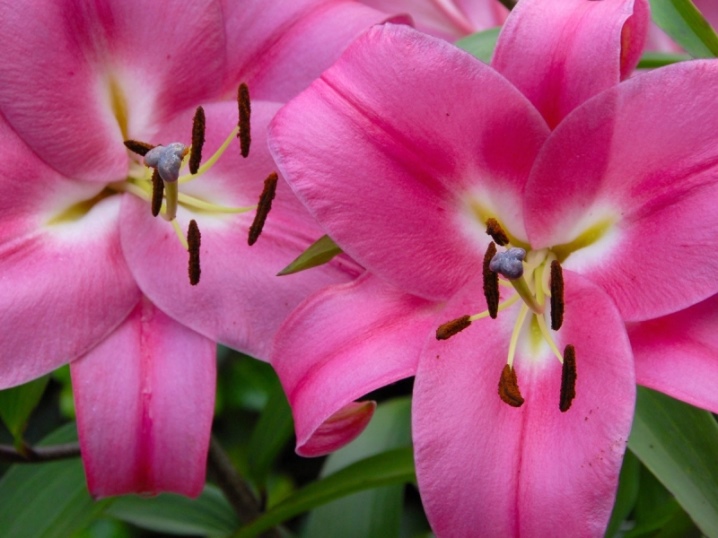
OA hybrid
Derived from Eastern and Asian representatives. The varietal variety is small at the present time. Very beautiful, graceful, large flowering. Grow well in partial shade and in the sun.The most popular variety, Kaveri, has a striking color that goes from raspberry to orange red.

Planting and leaving
In general, lilies are not too whimsical, and this is especially true for the sun. They do well in partial shade. Do not plant flowers in lowlands with stagnant water and too humid air. It is important that the garden is well ventilated, but the drafts are not strong. They grow up to 5 years in one place, so the soil must be periodically fertilized. Choose loose, nutritious soils with drainage.
Sand, clay and swampy places are absolutely not suitable.

Before planting, the soil should be dug up and fertilized with peat, ash, superphosphate. The process itself is simple:
- treat the bulbs with "Fundazol";
- disembarkation is made in the fall;
- sand and ash are introduced into the hole;
- the bulb sits in the ground at three of its heights;
- you need to distribute the roots;
- the onion is sprinkled with sand, earth, mulched.

Top dressing is carried out according to the following scheme:
- the first - complex fertilizers as soon as shoots appear;
- the second - during the formation of buds with superphosphate;
- third - during the flowering period.
Lily care includes a standard set of activities.
- Moisturizing - lilies love moderate humidity, they cannot be poured, otherwise the roots will die, rot. Moderately moist soil is ideal for them. Watering them once a week in the absence of rainfall is often not recommended. They do this only in summer in hot weather. In spring, hybrids should not be watered.
- Loosening - this must be done after moisturizing each time.
- Feeding.
- Weeding - as weeds appear.
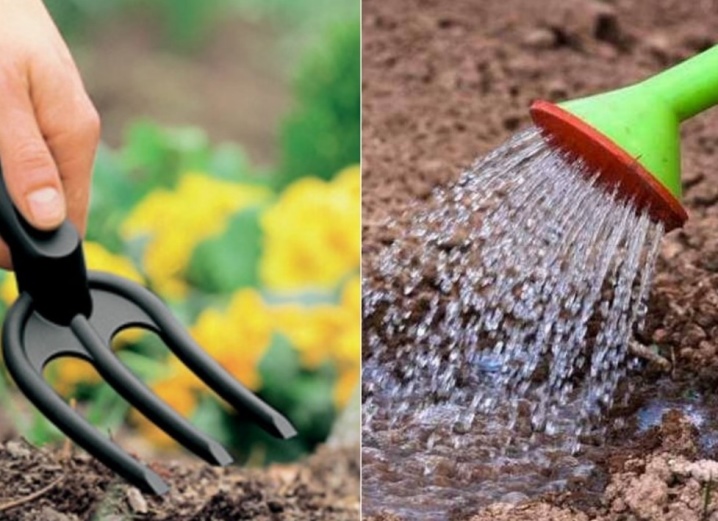
Lilies do not like transplanting, in no case should this be done during the period of active flowering.
High varieties of hybrids must be tied up, especially if the weather is windy and the place is not protected from drafts.
And also it is advisable to cover many varieties for the winter:
- this must be done after the final trimming of the entire flower bed;
- although not all varieties require shelter, in regions with a harsh climate it is better to play it safe;
- create a shelter in several layers - fallen leaves, spruce branches, peat, polyethylene;
- oriental hybrids are very thermophilic and do not like frost, it is better to cover them not with a leaf, but with a thick layer of peat and spruce branches;
- in the spring, only the upper layers are removed - film, spruce branches;
- the lower layers are left until the onset of stable heat.
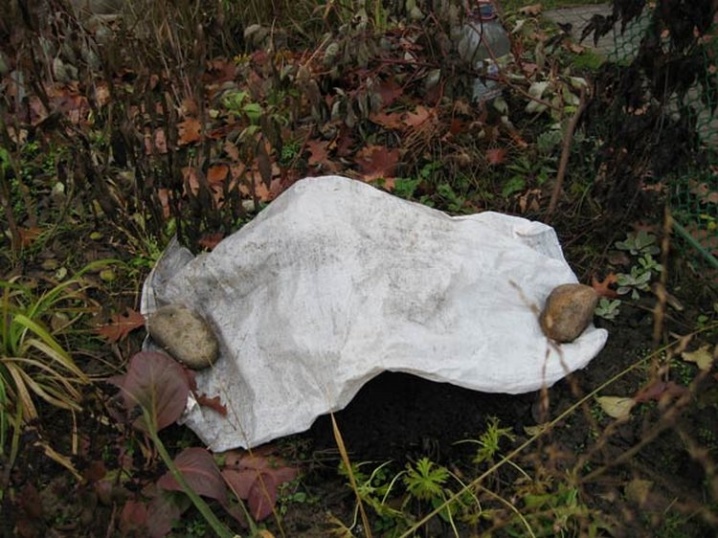
Examples in landscape design
Hybrid lilies are actively used in landscape design:
- multi-colored varieties and types of lilies in one flower garden look very impressive;

- lily hybrids look luxurious against the background of green spaces;

- outlandish hybrids can be a real decoration for your garden;
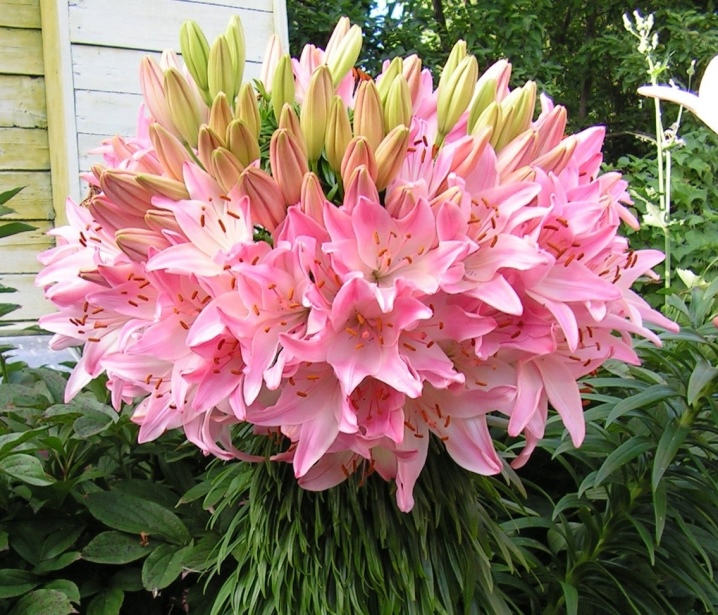
- exuberant lily bloom looks luxurious not only in gardens, but also in urban design;

- if you want to create an effective composition, combine hybrids of different heights in it;

- these flowers are gorgeous and self-sufficient, such a flower bed will make an indelible impression;
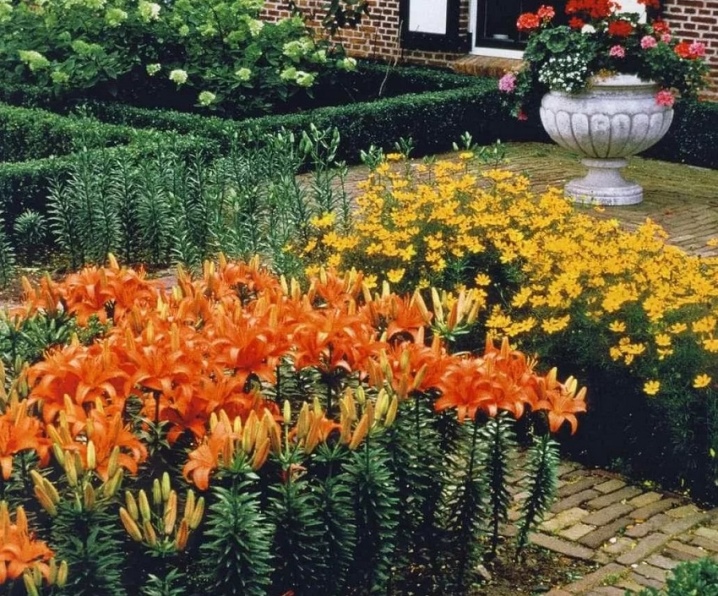
- the royal flower looks good in a company with other flowers and plants;
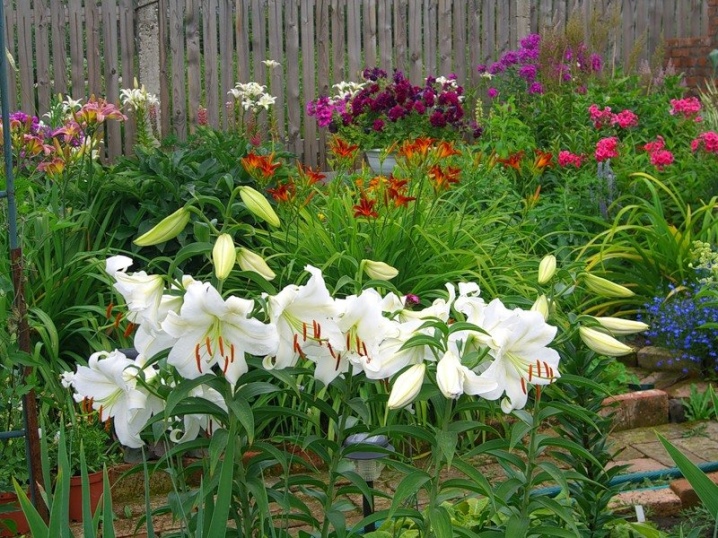
- lilies can be safely planted along fences, fences;
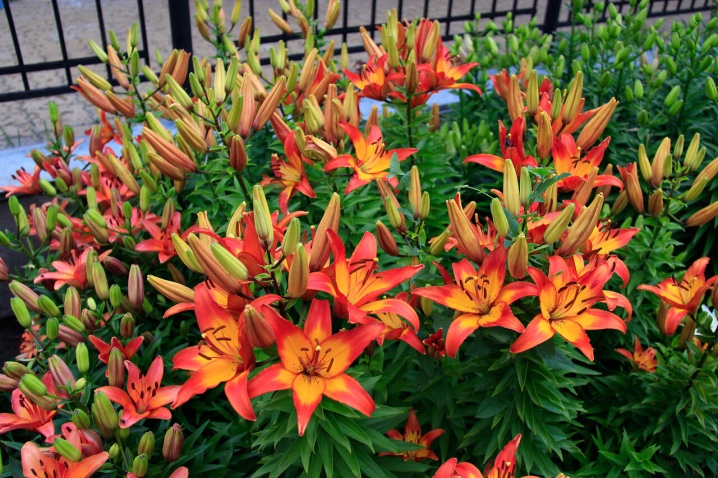
- the garden can be elegant and beautiful even with a small amount of lily inclusions;

- it is better to plant varieties along the paths that do not grow too high;
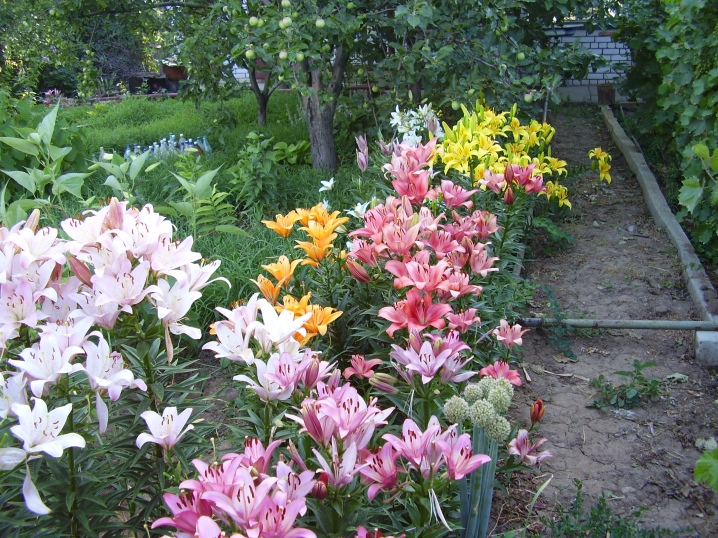
- it is better not to plant these flowers under trees, but in the immediate vicinity it is possible;

- do not be afraid to experiment - combine lilies of different colors on the same flower bed and supplement with other plants.
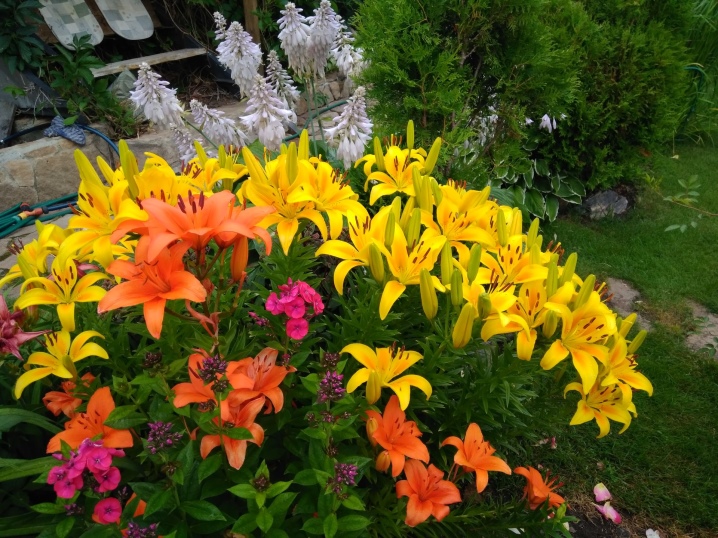
See below for more details.







































































































The comment was sent successfully.